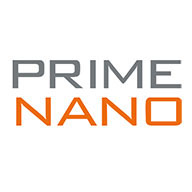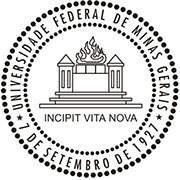SHOWCASES
Determining the Resolution of SMIM Using Donor Structures
In the following Applied Surface Science paper lead co-lead by Dr David Scrymgeour and Dr. Shashank Misra, the lateral resolution limits of sMIM are probed by examining nanostructures in silicon created through phosphorous doping using hydrogen resist lithography. This paper opens up the application of sMIM to studying quantum material

High-resolution Dielectric Characterization Of Minerals
In this International Journal of Mineral Processing paper, co-led by Dr Tamara Monti and Dr Alexander Tselev from ORNL’s Center for Nanophase Materials Sciences, an original approach for measuring the microwave conductivity of mineral phases in rocks, in situ and at microscale is introduced.
Microwave AC Conductivity Of Domain Walls In Ferroelectric Thin Films
In this just appeared paper in Nature Communications co-led by Dr. Alexander Tselev and Dr. Petro Maksymovych from ORNL’s Center for Nanophase Materials Sciences, it is shown that employing high-frequency ac conduction can open up new technological opportunities for oxide electronics as well as in harnessing electronic properties of materials with a poor dc conduction, especially at the nanoscale.
SMIM Sheds New Light On What’s Inside Technology
In this recently published article at Chipworks.com, how sMIM is allowing a better look into the electrical characteristics of latest technologies is examined. Specifically, the imaging of the pixels of the OmniVision OV2D7AG, a CMOS image sensor, is discussed.
Enclosed Objects and Processes in Liquids
In this freshly released ACS Nano paper co-led by Dr. Alexander Tselev from ORNL’s Center for Nanophase Materials Sciences and Dr. Andrei Kolmakov from NIST’s Center for Nano Science and Technology, a new paradigm for in situ in-liquid imaging at the micro- and nano-scale is introduced. The implementation harnesses the longer range sensitivity of near-field microwaves.
Next Generation Ferroelectric Memory Of Buried Ge In An FeFET Structure
This December 2014 journal article discussed how sMIM was used to provide key evidence for the change in conductivity of the germanium substrate induced by the polarization state of an adjacent ferroelectric layer. The results in this paper are an important step towards ferroelectric memory technology.





Measuring Quantum Hall Effect and HeTe Quantum Wells using LT ScanWave™
LT ScanWaveTM is the latest PrimeNano innovation available to market. LT ScanWaveTM enables electrical characterization of materials at ultra-low temperatures and high magnetic field. LT ScanWaveTM's technology has already put to use in research like the study of quantum Hall effect in graphene stripes at 5 K and 9 T, and HgTe quantum Wells at 9 T. Here are summaries of these two research.


The Limits of Near Field Immersion Microwave Microscopy Evaluated by Imaging Bilayer Graphene Moiré Pattern
Lateral imaging resolution of 1 nm was demonstrated using the ScanWave™ Pro in a recently published article in Nature Communications.
The authors collaborated across the world and during the pandemic to produce these stunning results. Using a graphene bi-layer system, they were able to produce moiré patterns of known periodicity by adjusting the twist angle between them. This capability will no doubt open up new applications for ScanWave
Uncovering a New Topological Edge State in Antiferromagnetic Topological Insulator MnBi2Te4
sMIM has been demonstrated as a powerful tool to image topological edge states in various topological phases of matter.
In a just published Nature Communication paper co-lead by Dr. Xiaodong Zhou and Prof. Jian Shen from Fudan University, a metallic edge state was identified by sMIM in a layered topological antiferromagnet MnBi2Te4 at zero field, which challenges the axion insulator interpretation.


Copyright 2024. All Rights Reserved
